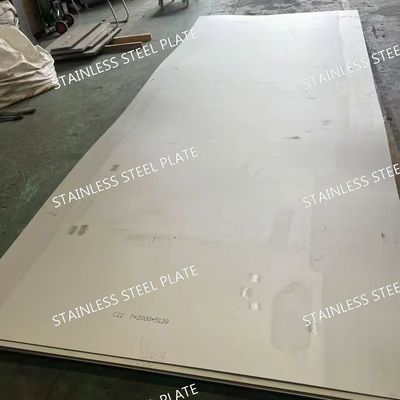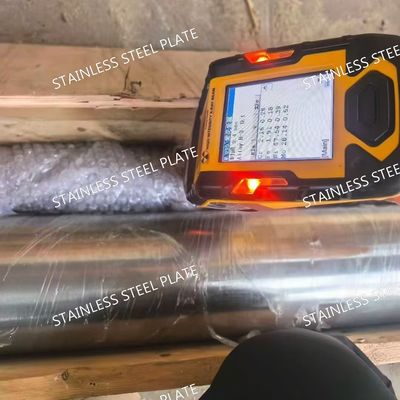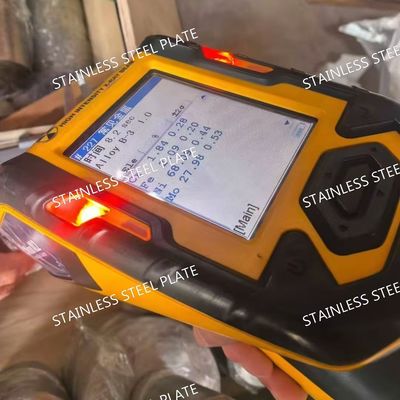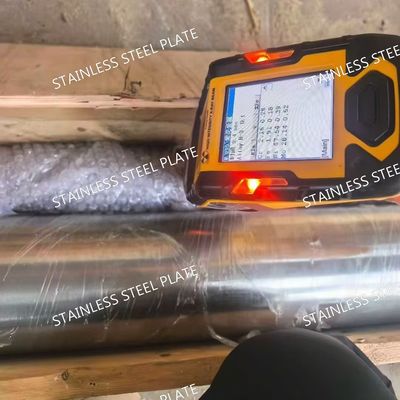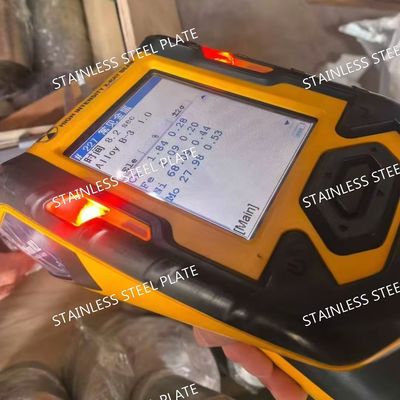-
 Raian IonescuMaterial quality very good. we have cooperate more than 10 Years. They trade lots kinds of steel material. All material quality good. They duty for all material quality. We are planing continue cooperate with them in the future
Raian IonescuMaterial quality very good. we have cooperate more than 10 Years. They trade lots kinds of steel material. All material quality good. They duty for all material quality. We are planing continue cooperate with them in the future
ASTM A240 Alloy 316LN Stainless Steel Plate Versatile Alloy for High-Temperature Applications

Contact me for free samples and coupons.
Whatsapp:0086 18588475571
Wechat: 0086 18588475571
Skype: sales10@aixton.com
If you have any concern, we provide 24-hour online help.
x| Products | Stainless Steel Plate | Grade | 304 304L 316L 316LN 310S 321 2205 2304 2507 904L 254SMO 630 .etc |
|---|---|---|---|
| Thickness | 1.0 - 80.0mm | Width | 1219mm 1500mm 1800mm |
| Surface | NO.1 2B | Brand | BAOSTEEL TISCO |
| Standard | ASTM EN DIN JIS GB | Loading Port | Shanghai Port |
| Highlight | ASTM A240 316LN stainless steel plate,316LN stainless steel high-temperature plate,Alloy 316LN stainless steel plate |
||
ASTM A240 Alloy 316LN Stainless Steel Plate Versatile Alloy for High-Temperature Applications
Products Specification
| Products Name | 316LN Stainless Steel Plate Sheet |
| Main Grades | Stainless Steel J1, J2, J4, 201, 202, 301, 304, 304H, 304L, 309, 309S, 310, 310S, 316, 316L, 316LN,316TI, 317L, 321, 321H, 347,348, 409, 410, 410S, 420, 430, 441, 904L,630,631,254SMO,654SMO,253MA,2205,2304,2507.etc |
| Thickness | 0.6 - 80.0mm |
| Width | 1250mm,1500mm ,1800mm,2000mm, or custom other size as request |
| Length | 2000mm, 2440mm, 3000mm, 5800mm, 6000mm, AS PER CUSTOMER’S REQUIREMENT |
| Service | Laser Cutting |
| Form | Plate / sheet |
| Cutting Shape | Round , Square, or any special shape as request |
| Test Certificate | Yes. |
| Finish | NO.1, 2B, 2D, 2H, 2R, No.4, HAIRLINE, SCOTCH BRITE, SATIN FINISH, NO.8, BA. |
| Brand | TISCO, LISCO,BAOSTEEL , POSCO, JISCO |
ASTM A240 Alloy 316LN Stainless Steel Plate: Versatile Alloy for High-Temperature Applications
Product Overview
The 316LN stainless steel plate is a low carbon, nitrogen-enhanced alloy, designed for high-performance applications, particularly in environments exposed to high temperatures and corrosive conditions. This material is often used in industries that demand resistance to both heat and corrosion, such as chemical processing, power generation, and marine applications.
Production Standards
316LN stainless steel plates are produced in accordance with the following international standards:
-
ASTM A240 – Standard Specification for Chromium and Chromium-Nickel Stainless Steel Plate, Sheet, and Strip for Pressure Vessels and for General Industrial Applications.
-
ASME SA240 – The American Society of Mechanical Engineers (ASME) version of ASTM A240, applicable for pressure vessel fabrication.
-
EN 10088-2 – European standard for stainless steel.
These standards ensure the material is manufactured to the highest quality, ensuring dimensional tolerance, surface finish, and mechanical properties that meet industry requirements.
Chemical Composition
The typical chemical composition of 316LN stainless steel (expressed in percentage) is as follows:
-
Chromium (Cr): 16.0 - 18.0%
-
Nickel (Ni): 10.0 - 14.0%
-
Molybdenum (Mo): 2.0 - 3.0%
-
Carbon (C): ≤0.03%
-
Nitrogen (N): 0.10 - 0.20%
-
Manganese (Mn): ≤2.0%
-
Silicon (Si): ≤1.0%
-
Phosphorus (P): ≤0.045%
-
Sulfur (S): ≤0.030%
The key differentiator for 316LN is the addition of nitrogen (N), which enhances strength and pitting resistance, particularly in chloride-rich environments. It also reduces the carbon content compared to 316L, improving its ability to resist carbide precipitation during welding.
Mechanical Properties
316LN stainless steel offers a strong combination of toughness and corrosion resistance, with the following typical mechanical properties:
-
Tensile Strength: 520 - 700 MPa
-
Yield Strength: 240 - 290 MPa
-
Elongation at Break: ≥40%
-
Hardness: HRB 80 max
-
Modulus of Elasticity: 200 GPa
-
Density: 8.0 g/cm³
These properties make 316LN stainless steel an excellent choice for applications that require a combination of mechanical strength, formability, and resistance to elevated temperatures and corrosive environments.
Differences Between 316LN and 316L
While both 316LN and 316L stainless steels belong to the same family of austenitic stainless steels, there are several key differences:
-
Carbon Content: The “L” in 316L stands for low carbon content (≤0.03%), which helps improve weldability and reduces the risk of carbide precipitation in welding. 316LN, however, has even lower carbon content and a slightly higher nitrogen content to enhance its mechanical properties and resistance to pitting and crevice corrosion.
-
Nitrogen Content: 316LN contains nitrogen (0.10 - 0.20%), which helps increase its strength and resistance to corrosion, especially in chloride-rich environments.
-
Strength: 316LN is generally stronger than 316L due to the presence of nitrogen, which increases its tensile strength and yield strength, making it more suitable for structural applications under stress.
Similar Grades
Similar alloys to 316LN include:
-
316L: The standard low-carbon version of 316 stainless steel.
-
317LN: Similar to 316LN but with higher molybdenum content for enhanced corrosion resistance.
-
Alloy 904L: A super austenitic stainless steel with higher resistance to chloride-induced pitting and crevice corrosion than 316LN.
Applications
The versatility of 316LN stainless steel plate makes it ideal for a range of demanding applications, including:
-
Chemical Processing Equipment: Reactors, heat exchangers, and storage tanks.
-
Power Generation: Components exposed to high temperatures and corrosive atmospheres.
-
Marine Environments: Components for ships, offshore platforms, and coastal infrastructure.
-
Pharmaceutical and Food Processing: Equipment that requires high levels of cleanliness and corrosion resistance.
-
Aerospace: Parts and structures that experience both elevated temperatures and corrosive environments.
Conclusion
ASTM A240 Alloy 316LN Stainless Steel Plate is a high-performance material specifically engineered for high-temperature and corrosion-resistant applications. Its combination of enhanced nitrogen content, low carbon, and excellent mechanical properties makes it a superior choice for critical environments, setting it apart from similar alloys like 316L. Whether for industrial, marine, or power generation applications, 316LN provides reliable performance in the most demanding conditions.
![]()
![]()
![]()
![]()



